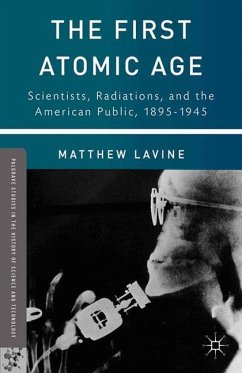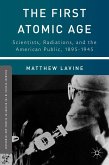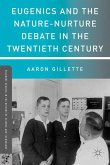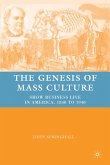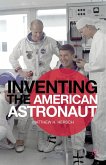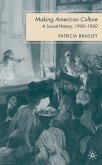At the close of the 19th century, strange new forms of energy arrested the American public's attention in ways that no scientific discovery ever had before. This groundbreaking cultural history tells the story of the first nuclear culture, one whose lasting effects would be seen in the familiar "atomic age" of the post-war twentieth century.
"Using crisp, stylish prose, the author debunks Blondlot and illuminates the contributions of the Curies. . . . This literate and literary tour de force, part of the series 'Palgrave Studies in the History of Science and Technology,' deserves a wider audience than it is likely to receive." - CHOICE
"In his fascinating account of science and culture in the era of radium elixirs, naughty X-Rays, and bizarre alchemical transmutations, Matthew Lavine shows us how radiation and radioactivity were emblematic of modernity long before the so-called nuclear age." - Jacob Darwin Hamblin, author of Arming Mother Nature: The Birth of Catastrophic Environmentalism
"This is a thorough and engaging treatment of an important and curiously under-studied subject. Lavine has an eye for evocative detail and stories, and the wealth of information the book includes is one of its strongest features. He has a knack for presenting information in a manner which illuminates a range ofanalytical issues: questions of access, mystery, expertise, commodification, differential knowledge, celebrity, fraud, and fear - as well as the everyday experience of readers, patients, and consumers. The First Atomic Age is an important and valuable contribution, and constitutes essential reading for anyone interested in early nuclear culture." - David K. Hecht, Assistant Professor of History, Bowdoin College
"Linking dime-store novels and pulp magazines with a thousand faintly radioactive tchotchkes, Lavine leaves no stone unturned as he delves deep into the complex cultural geography of Americans' early fascination with radium and X-rays, those most radiant icons of scientific modernity. Challenging assumptions that it all began with the bomb, Lavine traces across the early twentieth century the subtle everyday ways in which America become atomic. An essential text for rethinking the emergence of American nuclear culture." - Luis Campos, Department of History, University of New Mexico
"In his fascinating account of science and culture in the era of radium elixirs, naughty X-Rays, and bizarre alchemical transmutations, Matthew Lavine shows us how radiation and radioactivity were emblematic of modernity long before the so-called nuclear age." - Jacob Darwin Hamblin, author of Arming Mother Nature: The Birth of Catastrophic Environmentalism
"This is a thorough and engaging treatment of an important and curiously under-studied subject. Lavine has an eye for evocative detail and stories, and the wealth of information the book includes is one of its strongest features. He has a knack for presenting information in a manner which illuminates a range ofanalytical issues: questions of access, mystery, expertise, commodification, differential knowledge, celebrity, fraud, and fear - as well as the everyday experience of readers, patients, and consumers. The First Atomic Age is an important and valuable contribution, and constitutes essential reading for anyone interested in early nuclear culture." - David K. Hecht, Assistant Professor of History, Bowdoin College
"Linking dime-store novels and pulp magazines with a thousand faintly radioactive tchotchkes, Lavine leaves no stone unturned as he delves deep into the complex cultural geography of Americans' early fascination with radium and X-rays, those most radiant icons of scientific modernity. Challenging assumptions that it all began with the bomb, Lavine traces across the early twentieth century the subtle everyday ways in which America become atomic. An essential text for rethinking the emergence of American nuclear culture." - Luis Campos, Department of History, University of New Mexico

